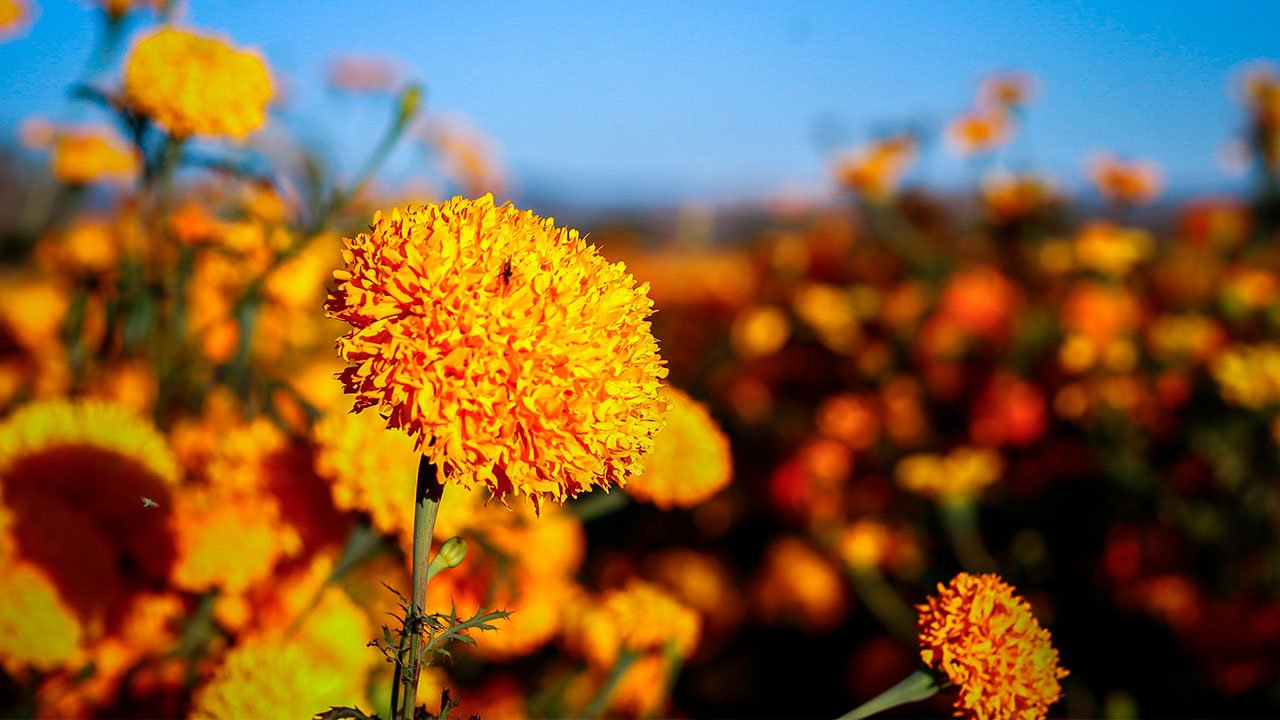The marigold flower; a Mexican icon to the World.
The marigold flower; a Mexican icon to the World.
¡Escucha la lectura mientras lees para corregir tu pronunciación, entonación y puntuación!
The marigold flower, or Cempasúchil, symbolizes the Day of the Dead in Mexico, thanks to its color and aroma it is one of the most representative elements of the offerings for the dead.

The marigold flower (Cempasúchil) is native to Mexico, its name comes from the Nahuatl “Cempohualxochitl” which means “twenty flowers” or “several flowers”.
Scientifically, marigold is called “Tagetes erecta” and is a plant exclusive to the American continent. It grows in Mexico, Central America, and even South America.
It is said there are about 58 species, but very few are used for Day of the Dead purposes. In Mexico it is estimated the presence of 35 species of the flower, of the 58 referred for America.
In our country, the states of Guanajuato, Hidalgo, Michoacán and Estado de México are the ones with the best soil and climate conditions for the production of marigold. This flower only blooms after the rainy season.
Our ancestors assimilated the yellow color of the marigold flower with the sun, reason why they used it in the offerings dedicated in honor to their dead. The tradition marks to make paths with the marigolds, from the main road to the altar of the house with the purpose of guiding the souls to the altars.
The flower was considered by the Mexica as a symbol of life and death.
The flower’s stem can reach up to one meter in height, while its buds can reach five centimeters in diameter.
On November 1 and 2 the dead are celebrated in our country, these are days when we can appreciate the most intense color and smell of the flower.

China and the marigold.
Despite being a native species to Mexico, China is the main producer of marigold for industrial use, with three quarters of the world’s marigold. This exploitation of marigold cultivation by China lies in the properties of this plant, which has several other uses besides ritual.

Interesting facts of the flower.
Essential oils are extracted from the plant to manufacture agrochemicals to combat insects and are used in the poultry industry to make chicken meat and egg yolks yellower.
Another characteristic of the marigold flower is its short life; most marigold flowers are annuals, meaning they are born and only live for one season. But because they have many seeds, they reproduce very easily.
And for centuries, different parts of the plant have been used for medical purposes, as an infusion when you have a stomach ailment, to relieve flatulence, to help the respiratory tract, and even to improve sexual desire.
The flower of the ritual and its legend:

Legend has it that Xóchitl and Huitzilin were in love since they were children and that in the afternoons they climbed the mountain dedicated to Tonatiuh, the Aztec god of the sun, and offered him bouquets of flowers.
But one day war broke out and Huitzilin went to fight to defend the Aztec lands and died.
Shattered with grief, Xóchitl asked the god Tonatiuh to free her from her suffering and reunite her with her beloved. The sun god complied with the request and let his rays fall on Xóchitl, and she was transformed into a bright yellow flower. Then a hummingbird landed in the center of the flower and it opened its 20 petals releasing an intense aroma.
Following Tonatiuh’s command, the Aztec couple’s love will remain as long as there are hummingbirds and cempasúchil flowers in the Mexican fields.

So now you know a little bit more why this flower is so important to Mexico and its people!
We love marigolds and Day of the Dead as well!



Wow! I didn’t know about the home remedies we can use this wonderful flower for! The legend is also new for me! Thanks a lot for this great article which enlightened me a lot!
Thank you so much. It is interesting, isn’t it? Besides being beautiful, this flower has been proven really handy. We appreciate your comments pretty much!